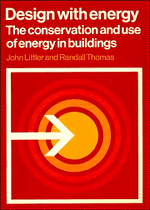2 results in Cambridge Urban and Architectural Studies

Integrated Land Use and Transport Modelling
- Decision Chains and Hierarchies
-
- Published online:
- 12 March 2010
- Print publication:
- 13 July 1989

Design with Energy
- The Conservation and Use of Energy in Buildings
-
- Published online:
- 03 February 2010
- Print publication:
- 30 August 1984

